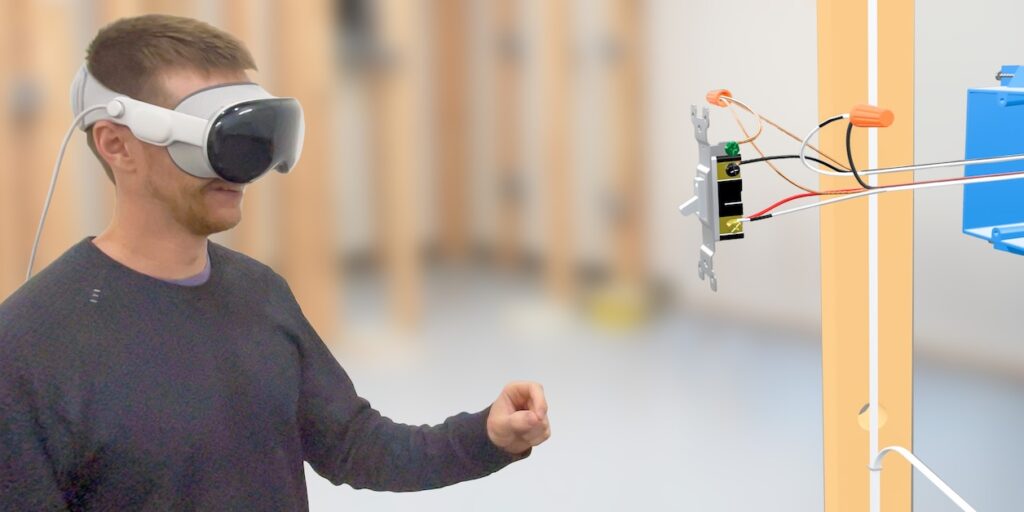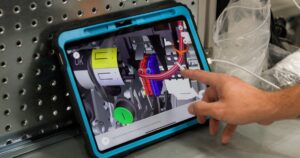As technology expands exponentially, businesses consistently adopt new tools and processes to improve operations and maintain a competitive edge. From digital transformation to the near-universal adoption of robotics and artificial intelligence in the workplace, employees are always learning. In the modern workplace, assuming that work instruction should be limited to a short-term onboarding program could be a critical error.
Nearly nine in ten employees think workplace training for hard skills is important. However, not all learning approaches are created equal. The best work instruction software provides modern, advanced instruction that is dynamic and engaging. Getting this right could mean the difference between establishing a culture of learning or lingering on outdated training processes with low participation rates.
How Can the Best Instruction Software Improve Your Business?
Efficient instruction is vital to many of the processes in any business. Whether it’s for onboarding, on-the-job review and guidance, new technology, or innovation, instruction should be engaging and accessible to all learners. According to one report, 55% of employees say they need more opportunities to “develop their skills and improve their work.” In other words, more than half of workers don’t feel as though they’re performing to their full potential or receiving the support the really need to succeed.
By providing engaging and efficient training opportunities with high-quality instruction software, you can ensure that your employees don’t feel this way. The best work instruction software can provide multisensory training that:
- Reduces Errors: Work instruction software that provides interactive 3D or fully immersive features allows users to closely examine and manipulate 3D models to assist in learning complex assembly and operational procedures.
- Improves Productivity: Effective training empowers employees to confidently carry out the tasks required to do their jobs efficiently. It provides clarity of expectations, gives employees a sense of importance, and enables them to complete their jobs without searching for additional resources.
- Increases Agility: Training that can be used for a variety of purposes enables businesses to provide employees with a broader education. When an organization uses the best work instruction software to develop a culture of learning, invest in practices like cross-training and upskilling, and prioritize the adoption of new technology to support their team, it’s able to better respond to unexpected circumstances.
- Reduces Turnover: In one report, Ninety-one percent of employees who responded to a survey wanted more training from their employers, but 75% felt that their employers placed more focus on attracting new talent than investing in current talent. What’s more, more than half of manufacturing employees under age 25 report they stayed with their employers because of training and development.
- Reduces Spending: Interactive work instructions enable employees to learn at their own pace in the ways that best align with their preferences. Resulting improvements, like improved productivity, reduced errors, and decreased turnover, help companies save money. When digital technology enables real-time updates, companies can also cut the costs of time and materials required for printing up-to-date regulations and requirements.
RELATED: STUDY: Impact of Immersive Technologies on Technical Training
The Importance of Learning and Development in the Modern Workplace
Modern businesses must keep up with technological advances, and employees are increasingly aware of the need for continually evolving skills to remain competitive in their chosen industries. According to a Gallup report, 65% of workers find employer-provided training important when evaluating a potential job, and 74% are willing to learn new skills to remain employable.
Related: Field Technicians: How to Bridge the Skills Gap
Today’s employees seek advanced training and opportunities for upskilling to improve job security, increase pay related to advancement opportunities, and achieve long-term career goals. As workers continue to seek these opportunities, learning and development (L&D) programs will become a central point of successful recruitment.
The rapid pace of technological advancements forces businesses and their employees to recognize the dangers of crucial skills gaps in practically all industries. Studies reveal that skill requirements for existing job roles have changed by nearly 25% from 2015 to 2021—and are likely to change by 40% by 2025.
Perhaps more concerningly, most of the jobs held by employees today didn’t exist as long ago as 1940, and 85% of jobs likely to exist a decade from now haven’t yet been created. This rapid change in workplace requirements leads 60% of employees to believe their current skill set will be outdated in the next three to five years. Employers echo these concerns, with 69% reporting an organizational skills gap (up from 55% in 2021). Recent statistics point out that:
- Less than a third of employees are very satisfied with current career advancement opportunities.
- 68% of employees want to learn and train on the job.
- 41% of employees find that boring training programs inhibit learning.
- 84% of employees at top-performing companies receive all the professional training they need.
While it’s clear that L&D is essential for companies to remain relevant in the modern business world, it’s also become clear that traditional learning techniques may not deliver the experience employees seek. Companies must invest in their employees and support their growth with the best work instruction software in order to successfully recruit, retain, and support the best team.
Key Features of the Best Work Instruction Software
Today’s most desirable companies already support their workforce with modern, advanced instruction. However, there is no instructional booklet sharing exactly what that means, and there are myriad advancements to explore and try out when it comes to technology.
If you’re wondering what’s available for training employees besides paper instructions and their 2D digital counterparts, you’re not alone. Finding the most effective training approaches to meet the multi-dimensional needs of any organization can be challenging. Luckily, modern technology offers the opportunity to take learning to new levels and meet the varied needs of learners in different environments. Here are five key features to seek in modern work instruction software that can transform how you train and support your employees.
Related: Buyer’s Guide to Technical Training
Feature #1: An Intuitive User Interface
3D digital technology enables learners to go beyond the static images provided by 2D instructional manuals and exploded view diagrams. Interactive 3D instructions even supersede videos by allowing users to interact with images in customized detail. The best digital work instruction software offers an intuitive interface that allows users to manipulate 3D images in real time, with interactive touchscreen manipulation. When the software includes animated step-by-step guides, workers can personalize learning experiences to simplify complex assemblies or processes.
Feature #2: Visual Immersion
By some estimates, 65% of the world’s population are visual learners. People retain 80% of what they see, compared to 20% of what they read. Some static learning materials attempt to appeal to visual learners with visual aids and infographics, but such imagery can fail to engage or even meet the needs of learners.
Related: The Dyslexia Dilemma: Why Written Instruction Manuals Fall Short in Employee and Customer Experience
Immersive learning allows users to go beyond simply looking at pictures—allowing them to actually interact with them on a digital interface. When learners can manipulate images and zoom in on specific details or rotate their view to see exactly what they need, they become more engaged in the learning process. It also allows employees to get an improved view of individual parts or specific steps to customize their learning experience.
Feature #3: Multisensory Capabilities
Learning styles aren’t restricted to text and visuals. There are four basic learning styles, which include visual, auditory, kinesthetic, and reading.
- Visual learners learn best when educational materials are reinforced by images.
- Auditory learners prefer subject matter to be accompanied by sound.
- Kinesthetic learners, also called tactile learners, learn through hands-on experience.
- Reading learners prefer to learn through written words.
The best modern learning solutions accommodate all types of learning in the most effective way possible. Advanced digital work instruction software contains 3D visuals accompanied by optional animated or text instructions and audio support, allowing learners to use the features that work best with their learning style. The interactive user interface also appeals to kinesthetic learners by providing a digital form of hands-on learning.
Feature #4: Dynamic Mobility and Interactivity
The best work instruction software allows your instructions to be converted into a 3D interactive experience that provides employees with efficient, detailed, and visual guidance—anywhere they need it. Whether learning material covers installation, assembly, programming, repairs, or maintenance, users can interact with detailed 3D images to customize their view in ways that make learning easier. Learners can manipulate images, repeat steps as often as they want, zoom in on specific components, and access step-by-step guides. This makes training, upskilling, or on-the-job review accessible and comprehensive.
Feature #5: Customizable and Comprehensive Task Guidance
It comes as no surprise that insufficient information can inhibit learning. However, many business leaders remain unaware of the consequences of providing too much information in a learning environment. An overabundance of complex learning materials can lead to information overload, which can overwhelm employees and lead to poor memory retention. To complicate the matter for educators, individuals have different requirements for optimal learning.
The best interactive learning software allows learners to choose how much or how little text or audio information they want alongside interactive animations. In the same way that apps allow users to manipulate product images, they enable users to choose when they need supplemental information. Learners can simply tap on parts of an image to access information that ranges from clarifying text to step-by-step guidelines.
Transform Your L&D Efforts with the Best Work Instruction Software
In the modern workplace, worker capabilities are only as strong as your training practices. Evolving technology and unpredictable business conditions demand that organizations across all industries develop a culture of learning. The best work instruction software enables you to provide employees with an engaging learning experience for more effective instruction in a variety of applications. As a leading 3D work instruction solutions company, BILT can help you replace static paper and digitized PDFs with advanced, interactive instructions that meet the varied needs of learners. Contact us today to learn more about how you can transform your employees’ learning experience with modern instruction software.




